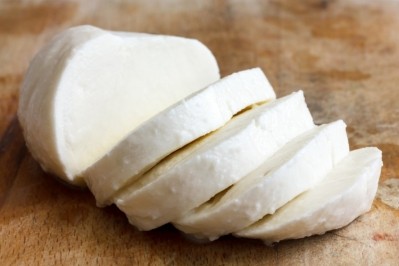‘Consumers want the same experience’: How Bel’s Nurishh is evolving plant-based cheese

More cheese-like, less artificial and less bland – these are the sensory attributes of semi-hard cheese alternatives that should be improved, according to consumers surveyed in a recent study into the sensory experiences of plant-based food alternatives.
Creating meltier, tastier cheese alternatives may not be rocket science, but developing such products has remained a major challenge for food innovators – to the extent that dairy majors have invested in machine-learning, precision fermentation technology, and cell-based dairy.
At SIAL Paris, we spoke to Sylvain Marchesson, the Out of Home Business Unit Director for Bel UK, to find out more about the company’s approach to plant-based cheese innovation. How far has the category come in recent years, we asked. “It was a growing category in 2022,” he opened. “Now it’s quite stabilized.
Bel first developed Nurishh (a play on the word ‘nourish’) in 2020 following the acquisition of plant-based cheese startup All in Foods. When it launched, the range comprised alt cheese in formats such as grated, slices, cubes, spreads and soft, and was sold in Europe, the Middle East and North America. The products were made from coconut and sunflower seed oil, contained natural flavors and colorants and were fortified with calcium and vitamin B12; Bel has now added fava bean protein and natural starches instead of modified. By 2023, Nurishh products were being sold in 26 countries, predominantly in Europe, generating €6.5m in total net sales.
“Within the foodservice market, you need to have a great taste and the same cooking functionality compared to a dairy product. We have re-worked [our] recipes six months ago and now we have the best in class in terms of meltability and taste. The reformulation has been done by the Bel R&D department.”
He demonstrated how the new Nurishh plant-based grated mozzarella alternative was used on a pizza prepared at the booth – admitting that ‘previously, it didn’t melt properly, but…this is like a dairy product’. According to the label, the product contains natural flavors and colors, is rich in calcium and vitamin B12 and is lactose-free.
“When a consumer goes to a restaurant, they want to get the same experience,” Marchesson explained. “The idea is to provide dedicated solutions to consumers who want to have alternatives when they go to the restaurant and bring them the same [dairy-like] experience.”
This is what Marchesson calls ‘democratizing’ the plant-based category; since vegan consumers have significant influence on their social group’s choice of restaurants, offering non-dairy menu options that would appeal to flexitarians and meat-eaters equally is key, he explained. As a result, Nurishh is targeting quick service restaurants, fine dining and education ‘because these three sectors are the main [purchasers] of plant-based cheese’.
Leveraging plant-based cheese also enables foodservice providers to lower their carbon emissions, Marchesson added; for example, a pizza made with shredded alt mozzarella from Nurishh may contain 15-20% fewer emissions, we were told. “You can switch your dairy ingredients to plant-based, but you can do a mix as well,” he said, hinting at opportunities for hybrid dairy to thrive in the foodservice space. “Instead of using 100% dairy, you can use 70% dairy and 30% plant-based. In the end, your carbon footprint will decrease.”
This is particularly important for large foodservice operators with upwards of 300 food outlets, he said.
The new Nurishh range is being rolled out in the coming months and contains both foodservice and retail ranges, including feta, parmesan and cream cheese alternatives; in formats including shredder, cubes and blocks.
Beyond starches and oils: How far has alt cheese innovation stretched?
In addition to reformulating its more traditional plant-based recipes, Bel is also exploring precision fermentation dairy by teaming up with Paris-based startup Standing Ovation and Perfect Day in the US; as machine-learning techniques by partnering with Climax Foods to discover plant combinations that naturally deliver improved nutrition and functionality for cheese alternatives.
Other cheese majors such as Leprino Foods are also investing in alternative methods to produce dairy alternatives (e. g. dairy-free mozzarella) that match up to traditional dairy.
Startups that specialize in animal-free protein ingredients, such as Those Vegan Cowboys and ImaginDairy, have been scaling up production in anticipation that demand for functionally-superior dairy alternatives would increase in the coming years.
Meanwhile, research has shown that taste remains a major driver for purchase intent, with consumers anticipating animal-free dairy to be tastier than current vegan cheese products and just as tasty and safe as animal-derived cheese.









